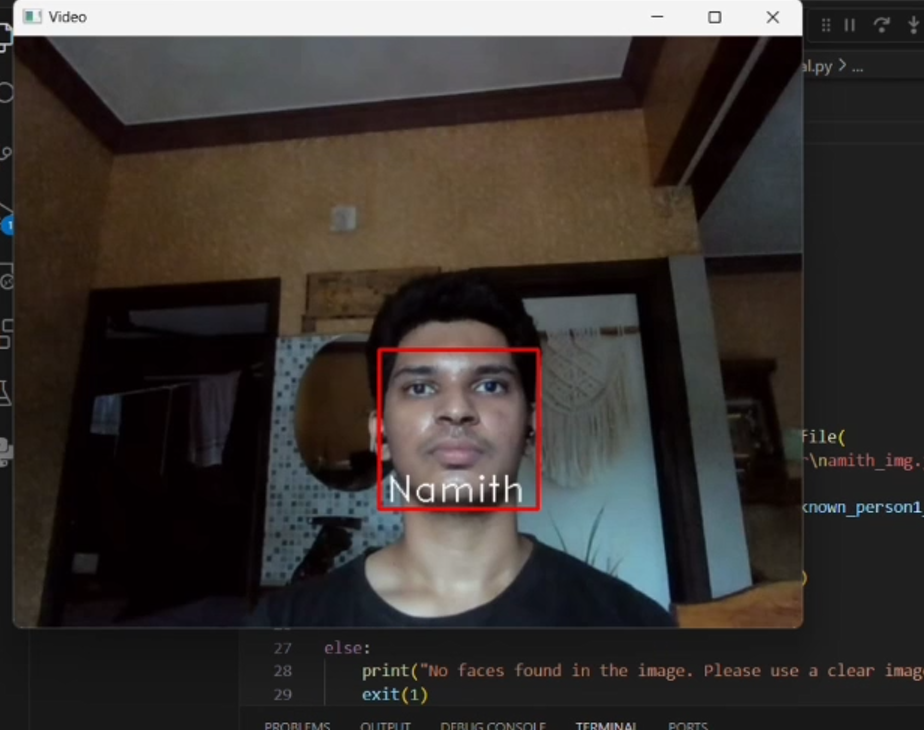Vision Lock – Where Your Face is the Key
Abstract
Abstract

A Project By:
Mentors: Roshan Warrier ,Ratan Y Mallya , Mukul Paliwal
Mentees: Namith A P,Samip sorathia,Johan Bijoy,Shaunwin Royce Pereira,Shivani
GitHub Repository: https://github.com/Ratan-Y-Mallya/Vision-Lock
Google Meet Link: https://meet.google.com/uhm-mgvt-uwq
Or dial: (US) +1 781-514-9446 PIN: 423 191 557#
AIM
The primary aim of the VioSion Lock project is to develop a comprehensive security system that:
- Provides dual-mode authentication for enhanced security and user convenience
- Implements robust OTP-based verification for remote access control
-
Integrates advanced facial recognition technology for seamless biometric authentication
Introduction
Traditional lock systems often rely on physical keys or simple PIN codes, both of which are susceptible to loss, theft, or duplication. Vision Lock proposes a modern alternative using biometric and digital security approaches. By implementing facial recognition alongside an OTP mechanism, Vision Lock enhances user flexibility and robust security. The system is ideal for modern IoT environments, offering secure access while eliminating the dependency on physical keys.
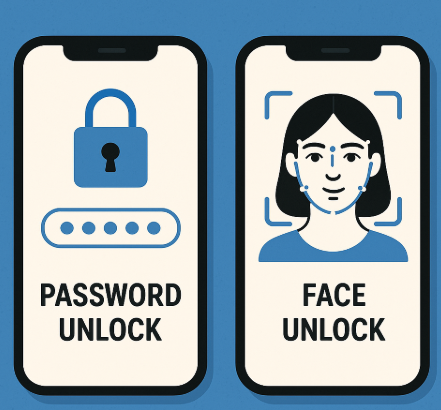
Literature Survey and Technologies Used:
1.Literature Survey:
- Biometric Authentication: Facial recognition has been studied extensively for non-intrusive biometric access. Techniques like Haar Cascades, Dlib, and deep CNNs have shown reliable accuracy in real-time systems.
- OTP Mechanisms: Time-based OTPs (TOTP) offer dynamic and secure codes for short-lived authentication, widely used in 2FA systems (RFC 6238).
- Smart Locks: Research highlights a growing demand for keyless, user-friendly, and secure lock mechanisms integrated with mobile and biometric solutions.
2. Technologies Used:
-
Python 3.x – Core language for implementation
-
OpenCV – Real-time face detection and recognition
-
Dlib – Deep learning-based face embeddings
-
pyotp – Python OTP generation library
-
SMTP – OTP delivery via SMS or em
-
GUI – Optional interface for input and control
-
Servo motor – Hardware control of lock
Methodology
1. System Architecture:
-
ESP-32 Microcontroller for control
-
Camera module for capturing facial data
-
LCD or OLED for feedback
-
Servo or Electromagnetic lock for physical locking mechanism
2. Face Unlock Module:
-
Face data captured using OpenCV
-
Pre-trained face recognition model (e.g., Haar Cascade or Dlib + FaceNet)
-
Face is matched against stored profiles
-
If authenticated, unlock is triggered
3. OTP Module:
-
OTP is generated using Python libraries (e.g., random, pyotp)
-
Sent to registered mobile or email using Twilio/SMTP
-
User inputs OTP via keypad or touchscreen
-
OTP is verified on the system, and access is granted if matched
4. Security Measures:
-
Limit on failed OTP attempts
-
Face recognition thresholding
-
Encrypted local face data storage
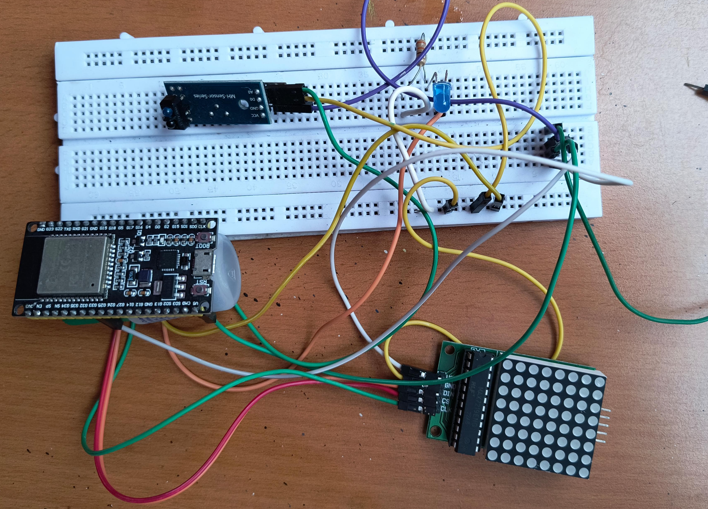
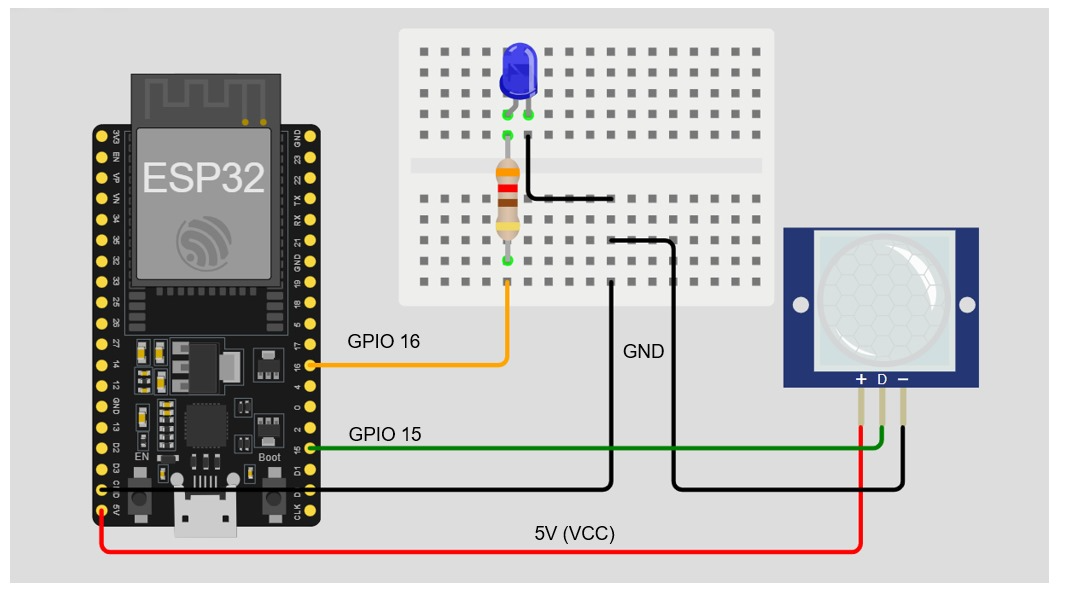
Results
| Features | Performance |
|---|---|
| Face Recognition | Face RecognitionFace Recognition |
| OTP Verification | OTP delivery in <2 seconds |
| Hardware Integration | Fully functional with servo motor |
1. OTP Based
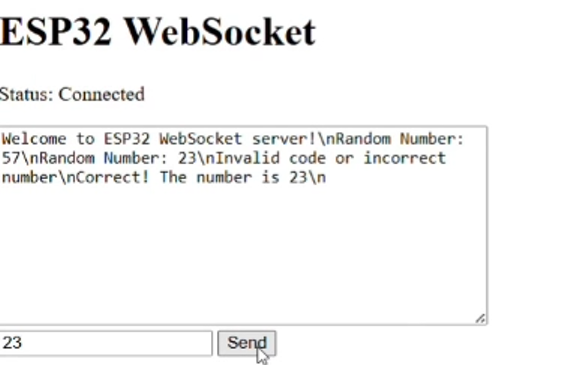
2. Face Unlock

Conclusions & Future Scope
1. Conclusions:
- Vision Lock successfully implements a dual-authentication smart locking system.
- The combination of biometric and OTP offers higher security and flexibility.
- It is effective in scenarios where facial recognition may fail (e.g., in poor lighting).
2. Future Scope:
-
Integrate with cloud-based user management for remote monitoring.
-
Add voice unlock or NFC access as additional fallback options.
-
Implement mobile app for unlocking, logging access history, and remote OTP generation.
-
Improve face recognition using deep learning CNNs for better performance under various lighting conditions.
-
Enable admin-controlled multi-user support and access logs with timestamps.
Reference
1. Smart Door Lock System with fingerprint & Camera | esp32 cam
2. https://github.com/PrateekSinghRajput/ESP32-And-Fingerprint-Sensor-Based-Biometric-Door-Lock
3. Build a Python Facial Recognition App with Tensorflow and Kivy
Report Information
Team Members
- Ratan Mallya [Diode]
- Mukul Paliwal [Diode]
- Roshan R Warrier [Diode]
Team Members
- Ratan Mallya [Diode]
- Mukul Paliwal [Diode]
- Roshan R Warrier [Diode]
Report Details
Created: May 22, 2025, 10:18 a.m.
Approved by: Mayank Singh [Diode]
Approval date: May 24, 2025, 7:41 p.m.
Report Details
Created: May 22, 2025, 10:18 a.m.
Approved by: Mayank Singh [Diode]
Approval date: May 24, 2025, 7:41 p.m.


